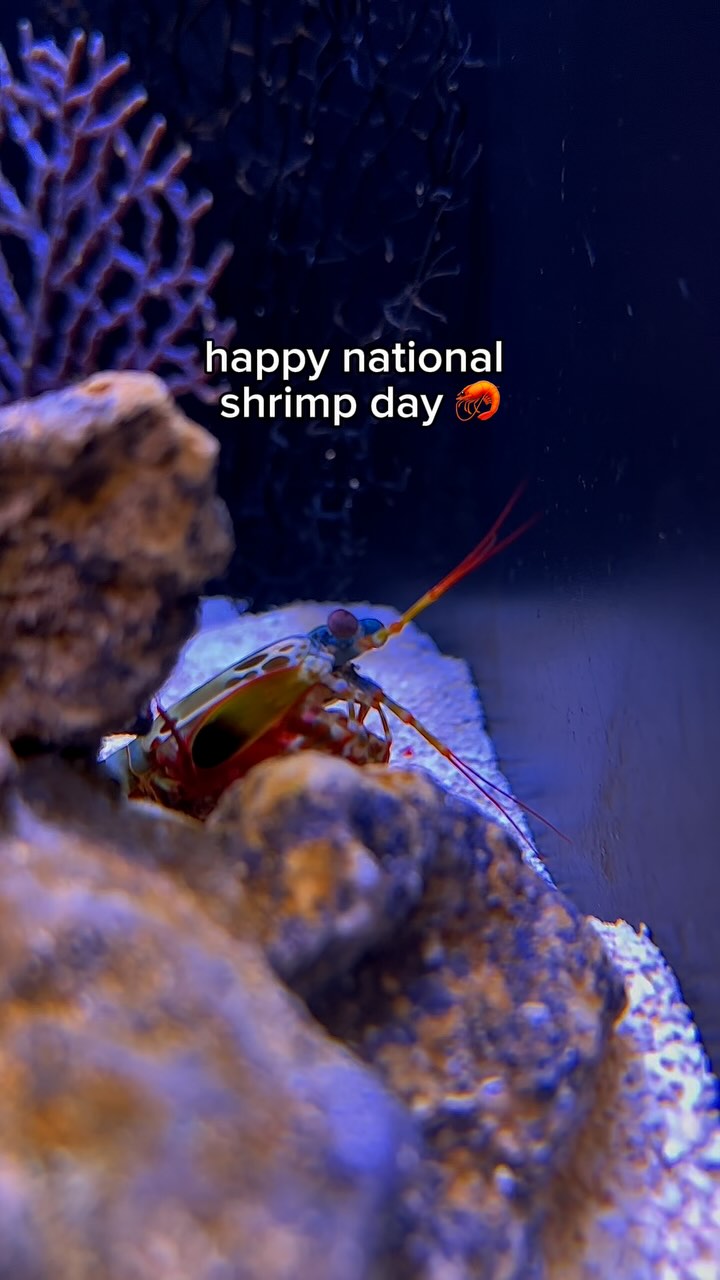- Introduction to National Shrimp Day and its significance.
- Overview of shrimp species with a focus on the Peacock Mantis Shrimp.
- Exploration of the Peacock Mantis Shrimp’s unique physical attributes and behaviors.
- Insights on shrimp conservation and habitat protection.
- Role of zoos and aquariums in shrimp education and conservation.
National Shrimp Day is an occasion that celebrates the remarkable diversity and ecological significance of shrimp. On this day, enthusiasts and conservationists alike recognize the contributions of shrimp to our ecosystems and cuisines. In the rich tapestry of marine life, shrimps play pivotal roles that stretch beyond their roles on our dining tables. They are intricate members of the aquatic ecosystems, thriving in varied environments worldwide, from salty oceans to freshwater rivers.
Our spotlight today shifts to a mesmerizing member of the shrimp family—the Peacock Mantis Shrimp. This vibrant crustacean is renowned not only for its beautiful coloration but also for its extraordinary predatory skills. The Peacock Mantis Shrimp is not a true shrimp, but its inclusion in this discussion offers a wonderful example of marine adaptations.
The Peacock Mantis Shrimp is part of the stomatopod order, distinct from other shrimp, crabs, and lobsters. They capture prey with exceptional speed and precision, using appendages known as raptorial claws. These claws strike with a velocity comparable to a bullet, fascinating scientists and marine enthusiasts. This powerful punch enables the Peacock Mantis Shrimp to break through shells and capture prey, demonstrating an astounding evolutionary adaptation.
The diverse appearances of shrimps include vibrant hues and intricate patterns, particularly evident in the Peacock Mantis Shrimp’s radiant exterior. Their complex eyesight, featuring trinocular vision and capable of perceiving polarized light, sets them apart. They possess up to 16 photoreceptor types, compared to humans who have only three, offering an extraordinary perspective of their underwater world.
Shrimps, including the Peacock Mantis, face numerous environmental challenges. Overfishing, pollution, and habitat destruction pose significant threats. Conservation efforts aim to protect their habitats and ensure the continued survival of these creatures. Supporting sustainable fishing practices and marine protected areas are essential steps toward maintaining shrimp populations.
Zoos and aquariums play an instrumental role in educating the public about these magnificent creatures. Institutions featuring dedicated marine habitats, like the Reef Secrets habitat, provide visitors with a chance to observe and learn about shrimps, including the Peacock Mantis Shrimp. These educational experiences foster a deeper understanding of marine ecosystems and the need for their preservation.
Advocates for marine conservation emphasize the importance of protecting shrimp not only for ecological balance but also for future scientific discoveries. The biological innovations found in the Peacock Mantis Shrimp, such as its powerful punch and unusual eyesight, continue to inspire scientific research, with potential applications in materials science and robotics.
National Shrimp Day serves as a reminder of the importance of shrimp in global aquatic ecosystems. They are not just sources of food but are essential components of marine biodiversity. Celebrating such species enhances public awareness and encourages sustainable practices that will protect these fascinating creatures for generations to come. As we learn more about shrimp, particularly fascinating species like the Peacock Mantis Shrimp, we recognize the incredible variety and adaptability present within our oceans. Engaging with these topics promotes a greater commitment to conservation and environmental stewardship.
*****
Source Description
Happy National Shrimp Day! 🦐
Check this beautiful Peacock Mantis Shrimp! Did you know they pack a punch 50 times faster than the blink of an eye in order to catch their prey! 🥊
Visit this tiny brawler in our Reef Secrets habitat.


